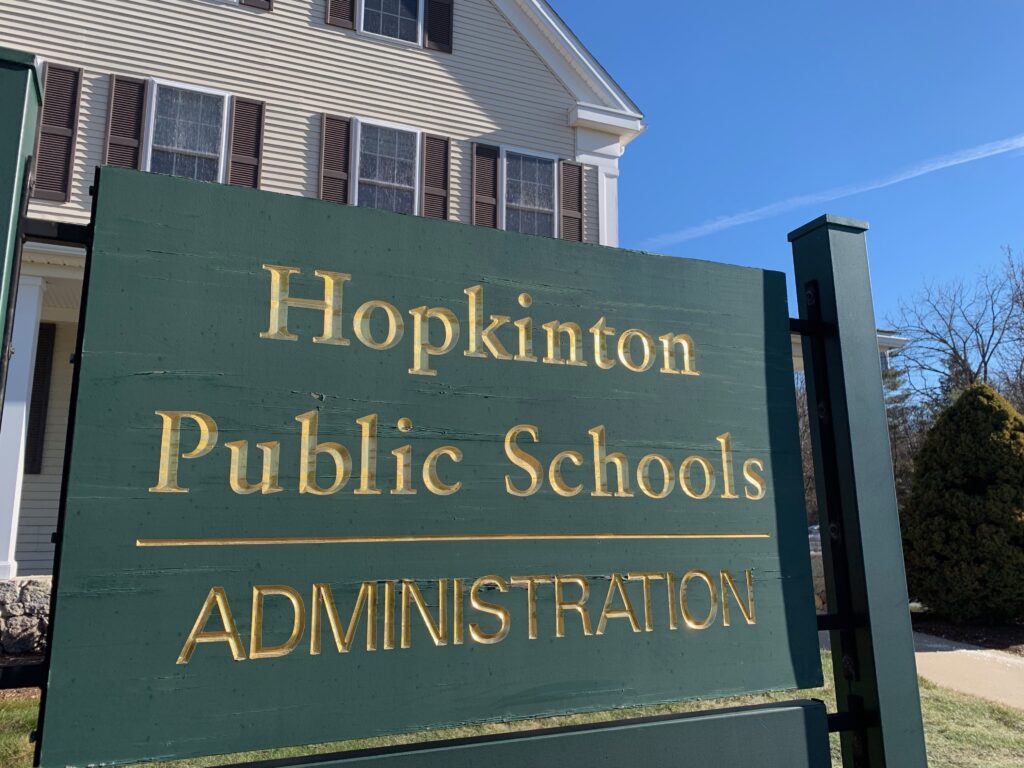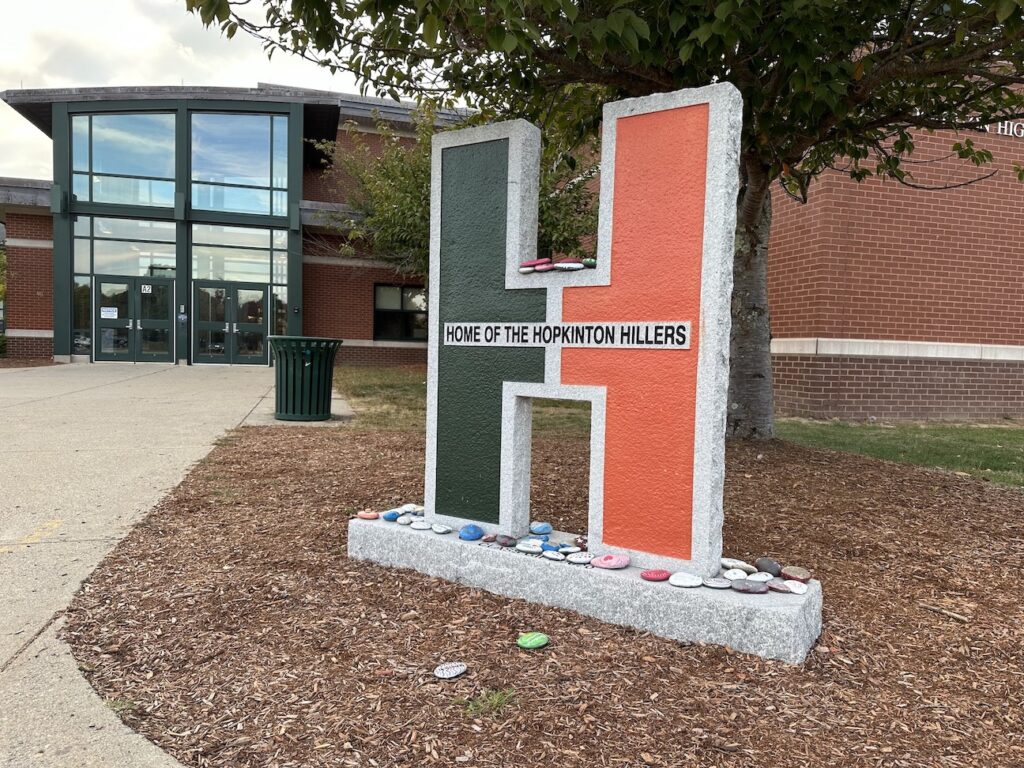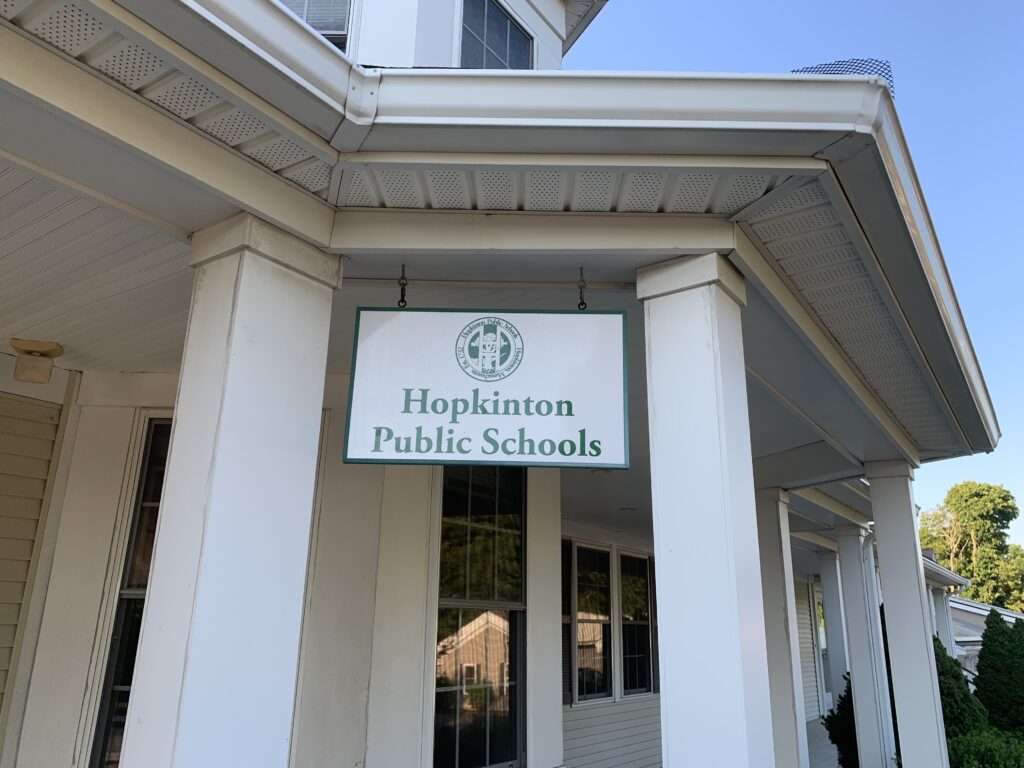The School Committee on Thursday talked about member Adam Munroe’s frequent absences and heard a report on disproportionality in special education.
During the public comment period, resident Ashley Fogg said Munroe’s attendance at meetings has been “abysmal,” citing the various dates he has missed and mentioning the recent three nights of Town Meeting.
Fogg, a former School Committee candidate, said she respects people who volunteer for boards but took issue with Munroe’s assertion when campaigning that he could balance service with his work schedule.
She called his missing of key votes “completely unacceptable,” saying it is a “disservice to voters” and an “affront to the town at large” that he is absent so often.
Fogg criticized the lack of public discussion by the School Committee on the topic, noting that that members could remove him by a majority vote.
She cited law that said removal is possible if a member misses four consecutive meetings or more than 50% of sessions.
Committee members do not engage in discussion during the comment period. However, later in the meeting, chair Nancy Cavanaugh said they are aware of Munroe’s absences, which are at 44%, not yet up to the 50% plus threshold for removal.
Cavanaugh said Munroe had missed the last two meetings (May 2 and May 16) and last attended on April 25. (The calculations do not include Town Meeting, which is not a regular meeting of the committee.)
She said his absenteeism is on the public’s mind and the committee’s radar.
Cavanaugh expects to have a conversation with Munroe and noted that the process for removal, should the committee decide to do so, involves sending a certified mail notice of intent 10 days before. First, the member must miss more than 50% of meetings or four consecutive ones, she reiterated.
Disproportionality report explained
Director of Student Services Abigail Hanscom explained that the law that governs special education in the United States (IDEA) requires that states determine disproportionality. It tracks the identification of children with disabilities in six categories; disciplinary actions — incidences, duration and type, including suspensions and expulsions; and placement in particular educational setting of students.
Data for seven groups is obtained: Black/African American, American Indian or Alaska native, Asian, Hispanic or Latino, multi-racial, native Hawaiian or Pacific Islander, and white.
Hanscom’s presentation gave statistics at the state level as well as specific to Hopkinton.
For example, the state has 923,349 students, 179,095 of whom have an individualized education plan (IEP). In Hopkinton, of 4,196 students, 566 (13.5%) have an IEP.
That percentage, which is for 2022-23, is up from 12.4% the previous year.
Although Hopkinton was found not to be disproportionate for categories like emotional disability or autism, it did get red flagged for having a “risk ratio” of 4.7 during 2022-23 for specific learning disability (SLD) in the white population. (Disproportionality is cited for 3.0 and higher).
Dyslexia or other learning disabilities in math or writing would be included in this group.
Hopkinton had a risk ratio of 3.39 in 2020-21 among white students in this SLD category and 4.63 the year after that.
Several of Hopkinton’s risk ratio numbers reflected six students or less and had to be calculated in a different way because there were so few, Hanscom said.
Hanscom said a draft plan was submitted to the Department of Elementary and Secondary Education (DESE), showing steps for improvement in professional development and tier systems for support, among other things.
She said she would return to the committee with information once she hears back from the state.
Hanscom agreed with Nancy Cavanaugh’s suggestion that part of the problem may be not identifying kids who are not white.
Assistant Superintendent Jeff LaBroad noted universal screenings are mandated for dyslexia in grades K-3 and the district is obligated to inform parents — increasing the odds they will ask for an evaluation.
However, some parents choose to wait or may prefer to work with their kids at home.
“It is not a diagnosis, it is a screening tool,” Superintendent Carol Cavanaugh said.
The Special Education Parent Advisory Council (SEPAC) can be “super helpful” with outreach to parents in terms of education, awareness and alleviating stigma, according to Hanscom.
One part of the plan is to survey the parent community to see where the comfort level is in asking for support, Hanscom said.
She expects it will take two or three years to improve the numbers, adding, “I’m very excited to think about this and make sure everyone is getting what they need.”
Also in special education, the committee approved a transportation contract from its existing vendor and sole bidder, Ride Right, totaling $512,000 — an 8% increase.
Hanscom said the amount budgeted was $397,000, with $140,000 set aside for future placements and $80,000 expected to come out as placements change.
“The budget can absorb the increase,” Hanscom said.
Bullying figures cited
A presentation by Carol Cavanaugh reviewed the number of bullying reports at each school as well as the number of bias incident reports (BIRs) submitted by students.
A total of 41 bullying allegations were reported in the district, with four withdrawn, 10 substantiated findings and 27 unsubstantiated cases, she said.
Broken down further, Marathon School had three substantiated cases, Hopkins School had one, and there were four and two at the middle and high schools, respectively.
At the high school, two students filed BIRs. One was a prank, and the other was anonymous and investigated. There were 15 submissions at the middle school. Of those, three were identified and followed up on, two were about the same incident, eight were found to be conflicts or incidents unrelated to bias and two were pranks.
In response to a question, student representative Jack Ianelli said that he and most students are aware of the BIRs, as administrators told them about them.
“It is a tool for us to feel more comfortable in school,” he said.
Ianelli added that he did not think many students submitted the reports because, “They don’t want to make a big deal out of things.”
Members say goodbye, opt out of school choice
In other business, the committee:
— Voted not to participate in the school choice program because of lack of space;
— Approved the renaming of the high school auditorium stage to honor longtime drama teacher Valerie von Rosenvinge, who is retiring in June;
— Agreed to raise the lunch price for adults from $4 to $5.50 to correspond with the USDA Foods per Meal value;
— Thanked Ianelli, the student representative, for his participation at meetings, referring to numerous times when he was called upon to voice the student perspective on issues. Ianelli was given a gift, and members wished him luck at Boston College. “You have been a real asset to the committee,” Nancy Cavanaugh told him.
— Acknowledged vice chair Amanda Fargiano and member Lori Nickerson for their service to the board, noting that it was their last meeting. They were presented with flowers and plants.
Fargiano, who served for six years, outlined the district’s various accomplishments and challenges during her tenure, adding, “There is so much new work to do.”
“It has been a journey. We did accomplish a lot of things,” Carol Cavanaugh said.
Nickerson was praised for stepping in mid-budget season when a five-month vacancy occurred after Holly Morand resigned. They noted it was a smooth transition back onto the board several years after the last time she was a committee member.
The next meeting on June 6 will see the board reorganize following Monday’s Annual Town Election.



















0 Comments